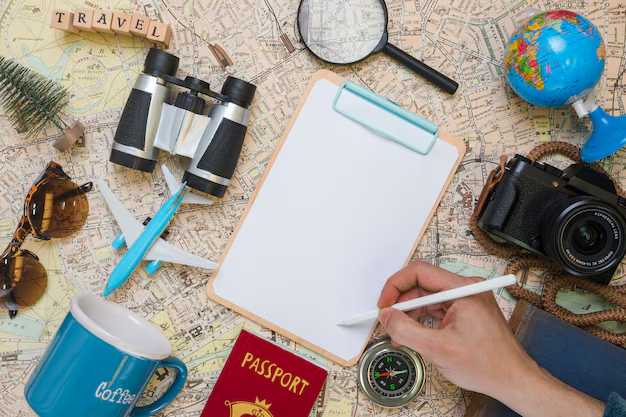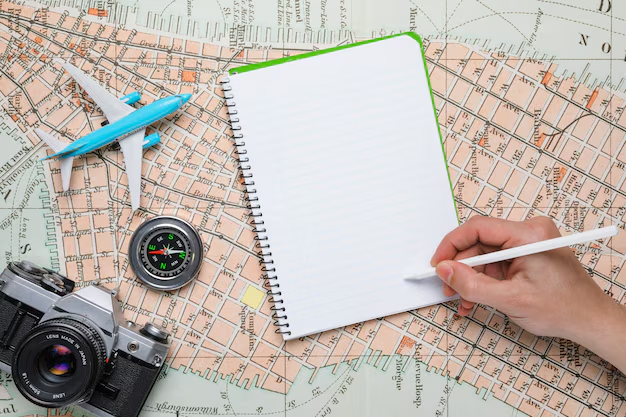Planning your first international trip can be both exhilarating and overwhelming. Whether you’re dreaming of exploring the streets of Paris, relaxing on the beaches of Bali, or hiking through the mountains of Switzerland, careful preparation is essential for a smooth and enjoyable experience. This guide will walk you through every step of the process, from choosing a destination to packing your bags.
Choosing Your Destination
Selecting the perfect destination is the foundation of your travel plans. Consider factors like your budget, interests, and the best time to visit. Research thoroughly about the country’s culture, language, and climate to ensure it aligns with your preferences. Websites, travel blogs, and social media platforms can provide valuable insights into popular destinations.
Setting Your Budget
Budgeting is a crucial aspect of international travel. Start by estimating your total expenses, including flights, accommodation, meals, transportation, and activities. Don’t forget to allocate extra funds for emergencies and souvenirs. Use tools like travel budget calculators to get a realistic estimate and stick to your financial plan.
Applying for Necessary Documents

Ensure your passport is valid for at least six months beyond your planned return date. Research visa requirements for your chosen destination and apply well in advance. Some countries also require travel insurance, which is a wise investment to cover unexpected medical expenses and trip cancellations.
Booking Flights and Accommodation
Compare prices on various travel booking websites to find the best deals on flights and accommodation. Look for packages that combine both to save money. Consider staying in budget-friendly options like hostels, Airbnb, or guesthouses if you’re traveling on a tight budget.
Creating a Travel Itinerary
An itinerary helps you organize your trip and make the most of your time. List the major attractions, activities, and restaurants you want to visit. Be flexible with your schedule to allow room for spontaneous exploration. Use apps like Google Maps and TripIt to manage your itinerary effectively.
Packing Smartly
Pack only what you need by creating a checklist. Consider the weather and cultural norms of your destination when selecting clothing. Essentials like travel adapters, toiletries, and a first-aid kit are a must. Keep your valuables, passport, and travel documents in a secure, easily accessible place.
Learning Basic Phrases and Local Etiquette
Familiarize yourself with basic phrases in the local language, such as greetings, thank you, and help. Understanding cultural norms and etiquette can prevent misunderstandings and show respect to the locals. A simple gesture like learning how to say hello can make a big difference.
Staying Connected and Safe
Inform your family and friends about your travel plans and share your itinerary with them. Purchase a local SIM card or an international roaming plan to stay connected. Always keep emergency contacts and the address of your accommodation handy. Be cautious of your surroundings, especially in crowded tourist areas.
Enjoying the Journey
Remember, the goal of your trip is to create lasting memories. Embrace new experiences, meet locals, and immerse yourself in the culture. Take plenty of photos and journal your experiences to cherish later.
Conclusion
Planning your first international trip may seem daunting, but with careful preparation and a positive mindset, it can turn into the adventure of a lifetime. Follow these steps, stay organized, and most importantly, enjoy every moment of your journey. The world is full of wonders waiting to be explored, so take the plunge and make your travel dreams come true.
FAQs
Q. What are the essential documents needed for international travel?
You’ll need a valid passport, a visa (if required), travel insurance, and a printed copy of your itinerary. Some countries also require proof of vaccination or health certificates.
Q. How do I find the best travel deals for flights and accommodation?
Use comparison websites, subscribe to airline newsletters, and book during off-peak seasons. Flexible travel dates can help you find better deals.
Q. How do I prepare for a long-haul flight?
Stay hydrated, pack snacks, wear comfortable clothing, and bring entertainment like books or downloaded movies. Consider using neck pillows and noise-canceling headphones for added comfort.
Q. What should I include in my travel itinerary?
Your itinerary should include key attractions, activities, dining options, and travel times. Allow flexibility for spontaneous adventures.
Q. How can I ensure my safety while traveling internationally?
Stay aware of your surroundings, keep your valuables secure, and avoid unsafe areas. Research local customs and laws to avoid unintentional offenses.

